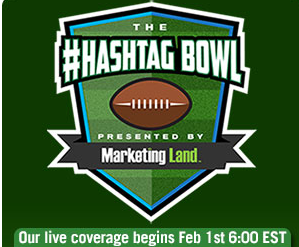 Jan. 30, 2015 Whether it’s using hit movies like Frozen as an icebreaker to talk about social shunning, bullying, social emotional tough stuff or Super Bowl ads as learning tools to ferret out what’s REALLY being said, sold, packaged, and presented at every age and stage, Shaping Youth is all about leveraging pop culture touch points as ‘teachable moments’ to instill critical thinking and meaningful media literacy as a life skill.
Jan. 30, 2015 Whether it’s using hit movies like Frozen as an icebreaker to talk about social shunning, bullying, social emotional tough stuff or Super Bowl ads as learning tools to ferret out what’s REALLY being said, sold, packaged, and presented at every age and stage, Shaping Youth is all about leveraging pop culture touch points as ‘teachable moments’ to instill critical thinking and meaningful media literacy as a life skill.
We’ve used Glee teen sex to fact check Hollywood’s perceptions vs realities with the CDC, and Rihanna’s “Man Down” video to discuss teens’ takeaway on dating violence, sexual assault repercussions and the justice system, so why not analyze Super Bowl ads as an education tool for public health in the classroom and take it a step further with participatory learning via student social media action?
Pick a hashtag, any hashtag, as there are TONS of them aimed at ads and brands impacting student’s wellness (junk food, alcohol, body image, domestic violence, cultural stereotypes, and of course Super Bowl sexism that pops up as regularly as Ground Hog Day) then challenge students to dive into any of the global conversations directly.
Last year, hashtags broke a new record with 57% of Super Bowl ads using them, and this year will no doubt be further amplified, so topics abound.
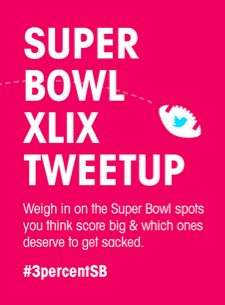 As discussed in part one, some might want to call out sexism with the #NotBuyingIt app from The Representation Project or product specific #CutTheCarls hashtags piled on to call for an end to the meat marketing raunchiness which will no doubt get a huge FUMBLE vote from female advertising executives tackling sexism in a tri-city tweet up along with homebase HQ in San Francisco and Take Part using #3PercentSB and #ChangeTheRatio.
As discussed in part one, some might want to call out sexism with the #NotBuyingIt app from The Representation Project or product specific #CutTheCarls hashtags piled on to call for an end to the meat marketing raunchiness which will no doubt get a huge FUMBLE vote from female advertising executives tackling sexism in a tri-city tweet up along with homebase HQ in San Francisco and Take Part using #3PercentSB and #ChangeTheRatio.
Reminder: please use the “Do Not Link.com” tool to ensure sexist slop like Carl’s Jr isn’t given any search engine lift, please. As a women and a mom with a daughter, I deplore Carl’s Jr. mind pollution and place them squarely in the “huge part of the problem” bucket of morally bankrupt corporate social responsibility. Bleh.
Flip side? I personally LOVE the hashtag “Media We Like” because it’s imperative to cite what’s right with equal zeal as what’s wrong, and analyze what could happen when the cultural zeitgeist shifts to the POSITIVE.
3Percent founder Kat Gordon anticipates ‘frat boy humor’ will be shut down this year, predicting a “lower testosterone, higher cultural awareness” experience. Sure hope so. It IS 2015 fercripesakes. The gender and diversity lens changes vision (and creative outcome) and no better way to bring voice via representation in the media mix to reach entire chunks of the population that are currently being underserved or downright insulted by some of the pablum being presented. What to do when squirm-worthy ads are in the ad line-up? Tips:
If you’re a male in the room with kids present, (regardless of relationship, neighbor, uncle, cousin, dad, boyfriend, or just one of the guys etc.) remember the all important element of your own reaction amidst screen time sexism and act accordingly.
It can be like a Harry Potter invisible cape to bounce-back sexism like a shield, deflecting quantifiable damage to young girls in real time, as it’s not just making women nauseous, it’s making us sick.
Here are some great co-viewing tips from Dads and Daughters on framing questions. Joe Kelly now gives his popular presentations as “The Dad Man” on the media and parenting circuit, highlighting the surge in eating disorders and body image issues, so appearance cues and Photoshop scrutiny merit keen attention to call out Truth in Ads relating to children’s health too.
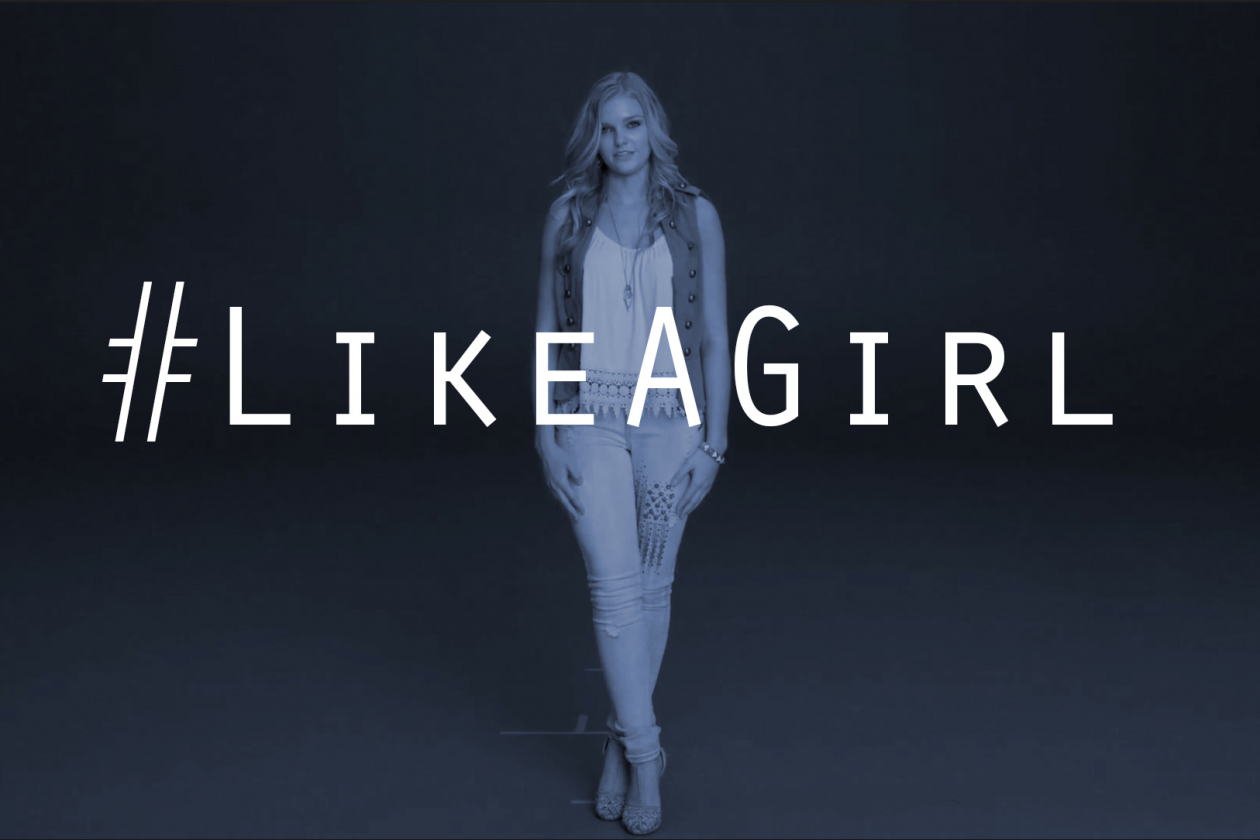 Even younger kids of both genders co-viewing with parents can learn critical thinking by stepping into another’s circumstances.
Even younger kids of both genders co-viewing with parents can learn critical thinking by stepping into another’s circumstances.
See through the lens of a girls’ eyes for example, and comment on messages like the Always “Throw Like a Girl” spot which will be running as a :60 ad, and of course “Sports Kid of the Year” Mo’ne Davis has redefined what that phrase means permanently, (and now has endorsement deals with Chevy).
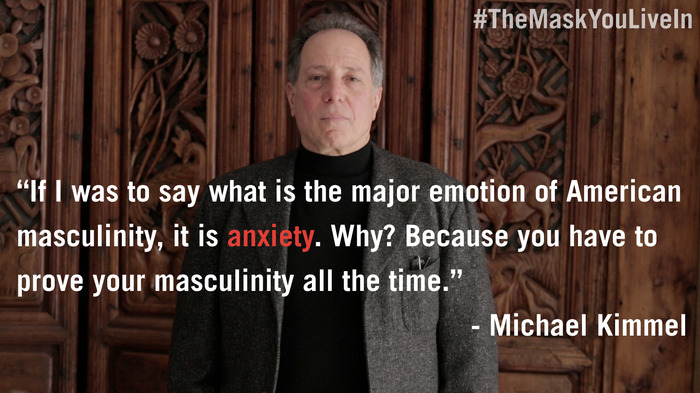 With 2015’s plethora of ‘dad ads’ this season challenging the status quo and celebrating a role of healthier masculinity, it’s the perfect time to uncork these societal conversations together.
With 2015’s plethora of ‘dad ads’ this season challenging the status quo and celebrating a role of healthier masculinity, it’s the perfect time to uncork these societal conversations together.
Boys are part and parcel of these gender conversations and 2015 is shaping up to be a huge ‘boys to men’ focus in media literacy deconstruction of pop culture portrayals. Dove for Men will be using #RealStrength for example, which opens up all kinds of essay opportunities for students to self-define and think deeply and critically about media’s role in that lens.
Maybe even toss in the new Mask You Live In documentary, fresh out of the Sundance film fest premiere, so boys can reflect on ‘what it means to be a man’ amidst today’s media portrayals of gender and the Super Bowl sports frenzy itself.
Homework assignment? View Super Bowl ads, discuss in class.
 As advocacy, awareness, and the popular practice of ‘hijacking’ hashtags nudges into the mix, it will make for an interesting student media literacy project on participatory learning, virality, and what happens when some brand ‘crashes the party’ so to speak.
As advocacy, awareness, and the popular practice of ‘hijacking’ hashtags nudges into the mix, it will make for an interesting student media literacy project on participatory learning, virality, and what happens when some brand ‘crashes the party’ so to speak.
New hashtags will no doubt organically spring up throughout the game in real time too, based on the brands and activism/advocacy swirling around it, just as the #NoDaddy tag became a staple for the repeat offensiveness of their attempts at cleverness, and the ‘puppy gate’ pushback of releasing a tone deaf, reckless ad only to pull it which has earned disdain, debate, and alas…discussion which easily plays into the marketing machine.
(See my related post on the excellent No More.org pitch perfect PSA against domestic violence for media literacy suggestions to ease into important health conversations as well!)
Students need to know “how this stuff works.”
Dubbed the #HashtagBowl as a giant social media scorecard, MarketingLand.com’s fourth year of analytics will track brand mentions across various platforms…
It’s a great tool for students to get the gist of just how vast, fast, and quantifiable “engagement” has become in the battle for mindshare (Bonus: it’s a privacy PSA and reminder of how fast their own antics can spread, graphic at left via CS Performance Academy on college admissions and sports!)
It’s important to use hands-on lessons with relevance in media literacy so students can decipher what’s coming at them and why on multiple channels.
Super Bowl specific hashtags:
 Students can follow Super Bowl tags like: #SB49 #SuperBowlAds #AdBowl #BrandBowl #SuperBowl #SuperBowlXLIX #GameDay along with the team’s own arcane glossary of hashtags for the Seahawks and the best hashtags for the Patriots to see just how fast media messages and voices carry, with trends shifting by the nanosecond.
Students can follow Super Bowl tags like: #SB49 #SuperBowlAds #AdBowl #BrandBowl #SuperBowl #SuperBowlXLIX #GameDay along with the team’s own arcane glossary of hashtags for the Seahawks and the best hashtags for the Patriots to see just how fast media messages and voices carry, with trends shifting by the nanosecond.
With Twitter taking advertising to a new level and cross platform immersion in surround sound, I asked media literacy educator Frank Baker what HE thought about using social media to engage students in deconstructing messages in real time. Here are a few of his thoughts in addition to his helpful Super Bowl Ads resource site that delves into how-to activities and tools for hands-on learning fun.
Frank Baker calls the Super Bowl “one of the last appointment TV events” with a nod toward streaming, social TV and mobile media taking hold in generational shifts. Don’t miss his helpful tips and au courant links for advertising deconstruction like:
- Deconstructing, Close Reading of Media Texts (includes commercials)
- Watch: 10 highest rated SB Ads is USA Today’s Ad Meter History
- Remix Super Bowl Ads With The Media Breaker
- Deconstruct AXE’s ‘Make Love Not War’ Super Bowl Ad
Shaping Youth in Conversation with Media Literacy Expert Frank Baker
Amy Jussel, Shaping Youth: What open-ended questions would you ask students to get them engaged in hashtags and social media monitoring of how ‘big business’ works and how brand narratives are constructed?
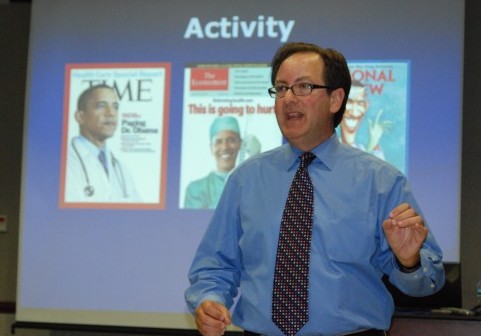 Frank Baker: The entire ad industry has changed and everyone is trying to figure out if tweeting about something (an ad, a program, a product) really translates to purchase. Because if they ever figure that one out, watch out.
Frank Baker: The entire ad industry has changed and everyone is trying to figure out if tweeting about something (an ad, a program, a product) really translates to purchase. Because if they ever figure that one out, watch out.
We all know brands are monitoring audience use of hashtags before, during and after the big game, and it’s very valuable as another metric for understanding how to engage an audience.
I’d ask things like: What ad did you tweet (retweet) about or write about and why? What ads did you think were most effective (and what makes an ad effective anyway)? What product would you want to buy; what product would your parents likely buy; how about grandparents?
The other issue for discussion that I’m pretty confident is not being addressed in middle or high school is the male dominated sports AND ad industries. The late George Gerbner said the storytellers today are no long parents, or churches…it’s the media. So if I was in a classroom, I would task students with doing a research project that investigates WHO is really behind the ads? (We know it’s mostly men.) But what would Super Bowl ads look like if those ads were produced primarily by women?
The last time I looked, the Super Bowl game seems to attract an audience which is about 60% male, and 40% female. With that information, students could interview different genders and get their reactions to the same ads.
Amy Jussel, Shaping Youth: As a parent/educator who has used hands-on media literacy enrichment programs to deconstruct motivations, emotional triggers, recall/responses using digital, broadcast and print as text, why do you think it’s so hard to get media literacy seen as a priority in the classroom?
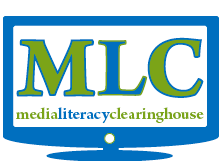 Frank Baker: I think educators (and parents) ought to open the discussion with students centered around a broader question:
Frank Baker: I think educators (and parents) ought to open the discussion with students centered around a broader question:
What is the PURPOSE of advertising?
Now if you answered selling, I would argue with you.
Perhaps the more accurate question here should be: OTHER than to sell, what is advertising designed to do?
Most of us don’t see/hear/read an ad and then immediately go out and acquire the product. It’s much more involved than that. Recently I heard an ad exec say “we’re NOT in the selling business; we’re in the PERSUASION business.” If that’s true (and I believe it is) then what we ought to be doing is helping young people understand the “techniques of persuasion.”
But the new Common Core ELA standards have wiped out persuasion in favor of “argument.” So I fear that most educators (in CC states) will ignore the all-important propaganda techniques in favor of argument. But honestly, how teachers will approach argument will probably involve PRINT and exclude non-print, and that’s the problem. Most teachers today are not getting sufficient training and understanding of media texts in their colleges of education.
Amy Jussel, Shaping Youth: Thanks, Frank. I think it’s imperative to teach kids what to watch for with media mindfulness and guard against manipulation and commodification.
Parents should inoculate their children preventively against the power of media influence by imparting critical thinking on all platforms. Keep up the great work, your site is an asset for us all and a wealth of ideas and knowledge sharing.
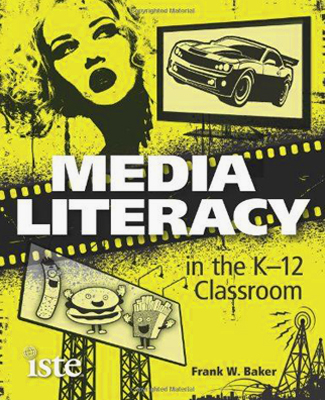 Frank W. Baker is a media literacy education consultant and the author of three books, including Media Literacy in the K-12 Classroom (ISTE, 2012).
Frank W. Baker is a media literacy education consultant and the author of three books, including Media Literacy in the K-12 Classroom (ISTE, 2012).
He contributed two chapters to Mastering Media Literacy (Solution Tree, 2014).
He is a recipient of the National Telemedia Council‘s annual Jessie McCanse Award given for individual contributions to the field of media literacy over at least 10 years. Follow him on Twitter @fbaker and visit his resource-rich website Media Literacy Clearinghouse.









Speak Your Mind